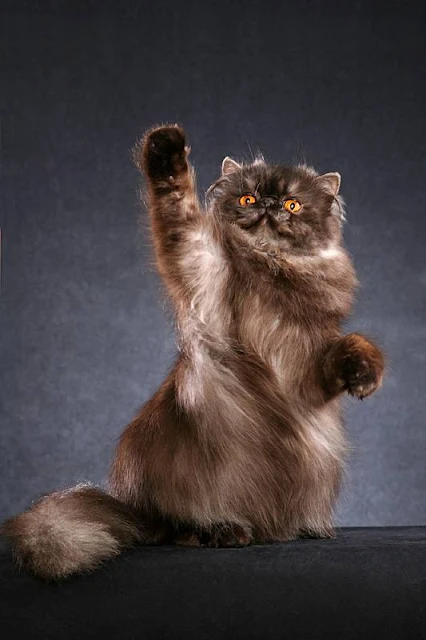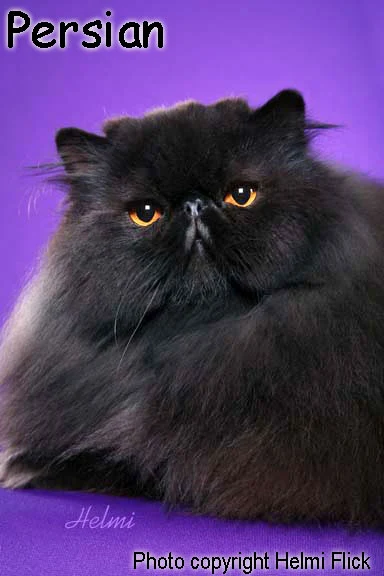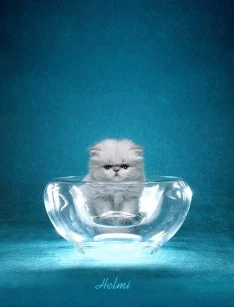Some of the best photographs of this breed are by Helmi Flick. Some more great photographs have been taken by Dani Rozeboom. These are my favorite cat photographers. Helmi is probably the most well known and respected cat photographer worldwide.

Pictures of Persian Cats - Cristalline by Dani. It's the Wow factor again. This is one of the cats living with Dani and Rick at her cattery Yeri Shaes in Almere, Netherlands. The photograph is copyright Dani and is reproduced as is all her work on my website with her permission. She is a traditional Persian orange eyed cat with gleaming white fur. She was born on 22nd May 2007 making her about one year old at the time of this post. Her full name is Kristal Cristalline and her nicknames are Christalline and Kristalletje. Another white traditional Persian with orange eyes, who lived with Dani and Rick, was Yeri. The cattery is named after him and I built a page in memory of him on the website.

Yes, here is Christalline again. These two pictures are so good I had to reproduce them both here. Photograph copyright Dani.
In addition to these two great photographers, there are a lot of amateurs or semi-professionals who are talented and some of their work can be seen on Flickr. The problem is there are a lot of photographer on Flickr so it takes time to find the really good stuff. I reproduce some of the best here. These are more or less chosen at random from the best that I can reproduce under the creative commons license.

Pictures of Persian Cats - Traditional Persian cat - black tortoiseshell coat. Photo copyright seb79. You can read about the black tortoiseshell coat by clicking on this link.
There a many people, the vast majority in fact, who prefer the traditional look. This is in relation to the Persian and the Siamese. Polls conducted on the Pictures of Cats website indicate that 78% of visitors to the site prefer the Doll Face (traditional) Persian. As the Siamese the proportion is even higher; 81% prefer the traditional Siamese appearance as opposed to the remaining 19% preferring the Modern Siamese. The traditional Siamese is called the Thai in TICA.

Pictures of Persian Cats - Heather, a golden shaded Persian. She is a traditional appearance. She was photographed by Helmi Flick for the Stardazl cattery for the cover of United Silver Fanciers. She has lovely "ear furnishings" - the hair coming out of her ears.

Photo copyright misplacedparadox (these names are Flickr usernames). I chose this picture as one in contrast to the others, more informal and it portrays the vulnerability of this lovely small Persian cat. It also shows the tenderness of the photographer and keeper towards the cat who I think is a female. Misplaced guesswork probably!
Pictures of Persian Cats to Persian Cats the transformation from Doll Face to Ultra.











.png)







